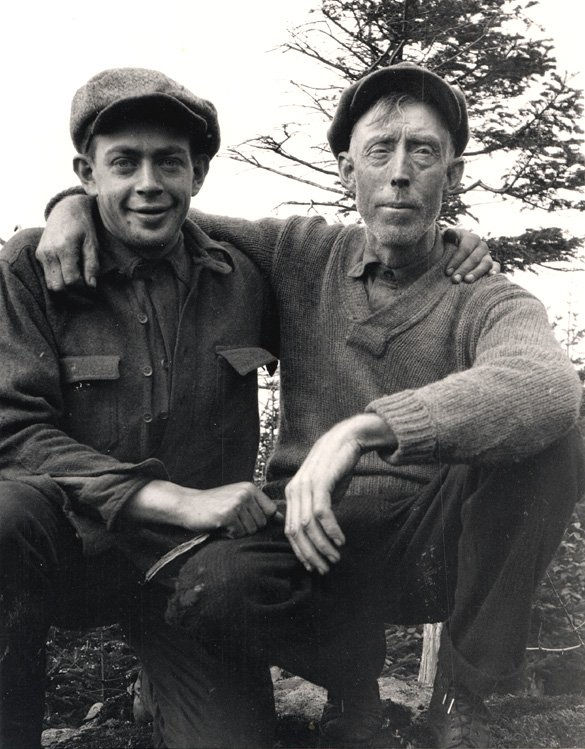100 Years Later: The Legacy of the First Adirondack 46ers
- Jun 10
- 4 min read

June 10, 1925--- The clouds drifted lazily over Mount Emmons as a warm breeze moved through the spruce, the midday sun breaking across the ridgeline while insects buzzed in the stillness of the forest. Three men—two brothers and their steadfast guide—stand quietly, breathing heavily, their breath crystallizing in the crisp Adirondack air. There is no triumphant summit sign, no cheering crowd, only the profound silence of wilderness few had ventured into. Yet this quiet, wooded summit marked a monumental achievement: Bob and George Marshall, guided by Herbert Clark, had become the first to conquer all forty-six Adirondack High Peaks. The moment was humble, deeply felt, and unknowingly historic.

Their journey began innocently enough in the summer of 1916. Teenagers Bob and George stood atop Ampersand Mountain, gazing across the sea of peaks, the thrill igniting a lifelong passion. Back home in New York City, winter evenings were spent immersed in Verplanck Colvin’s detailed survey maps, meticulously cataloging each Adirondack peak over 4,000 feet, driven by youthful exuberance and boundless curiosity.
Bob Marshall’s relentless energy became legendary. Described as “hyperactive and obsessive,” Bob meticulously recorded every summit, every wildlife sighting, every unnamed pond. His journals reflect an analytical yet poetic mind enchanted by wilderness. Younger brother George matched this intensity with quiet resolve, steadfastly supporting their ambitious goals. Their guide, Herbert Clark—affectionately called "Uncle Herb"—provided essential wisdom, guiding the boys through dense wilderness with quiet humor and unshakeable calm.

Their first official High Peak climb was Whiteface Mountain in August 1918. Though accessible, it set the tone for more challenging, remote adventures ahead. As their list of peaks grew, so did the physical and emotional
demands. Without marked trails, they navigated by compass and instinct, slicing through dense spruce and marshlands in heavy wool clothing and rugged leather boots. Bob wrote evocatively of such nights camped beside untouched beaver ponds, marveling, “…it seemed hardly possible that I was in the crowded Empire State of today.”
The rugged terrain and lack of trails often pushed them to the limits. Peaks like Couchsachraga and Allen Mountain became infamous among their accounts for testing endurance and patience. In 1921, an ambitious but confused expedition into the remote Seward Range resulted in a critical oversight—they missed the true summit of Mount Emmons. It would be four long years before they returned to correct this mistake, affirming their unwavering integrity and dedication.

The decision-making process behind certain peaks was also not without controversy. Gray Peak, originally excluded for its negligible prominence, was included at the urging of Russell Carson, who valued historical significance over strict topographic criteria. Similarly, peaks later confirmed under 4,000 feet—Blake, Cliff, Couchsachraga—remained on the list out of tradition and reverence for their original endeavor. These decisions shaped the future legacy, demonstrating a nuanced balance of precision and pragmatism.
Each ascent carried both hardship and revelation. Bob’s journal vividly recounts difficult climbs marked by exhaustion and scratched limbs. Yet even amidst frustration, reaching the summit was always transformative. On Mount Haystack, he famously wrote, “From Haystack you can look over thousands and thousands of acres, unblemished by the works of man, perfect as made by nature.” These profound moments anchored their adventure, elevating it beyond mere peak-bagging to something deeply spiritual.
100 Years Later...
The trio's journey concluded quietly atop Emmons on June 10, 1925, yet the echoes of their accomplishment resonated widely. Inspired by Bob’s descriptive pamphlet "The High Peaks of the Adirondacks," published by the Adirondack Mountain Club, subsequent generations formed the Adirondack Forty-Sixers. Herb Clark was honored as 46er #1, Bob Marshall as #2, and George Marshall as #3—a fitting tribute to their pioneering spirit.
Today, over 16,000 hikers proudly call themselves 46ers, transforming once solitary trails into bustling avenues. The increased popularity brings inevitable scrutiny. Critics argue the Marshalls’ legacy has inadvertently led to overcrowding, environmental degradation, and an unsustainable strain on wilderness resources. Indeed, the trails bear scars of overuse—erosion, habitat disruption, and summit congestion. Some lament the loss of solitude and pristine conditions that defined the Marshalls' experience.

Yet, amidst valid concerns, there remains a compelling counterpoint: this attention fuels conservation efforts, educational initiatives, and community stewardship. Advocates emphasize that experiencing wilderness firsthand fosters essential awareness and advocacy for its preservation. Volunteer groups, funded trail restoration, and summit stewardship programs actively mitigate negative impacts, championing responsible outdoor ethics deeply rooted in Bob Marshall’s vision.
However, the controversy persists. Some argue passionately that the popularity of the High Peaks has irreversibly damaged the very wilderness Bob Marshall sought to protect. Trailhead parking overflows, human waste issues intensify, and the quiet moments of solitude cherished by early adventurers become increasingly rare.
Yet, the benefits cannot be overlooked. Thousands of people who may never have understood or valued wilderness now advocate passionately for its protection because they experienced firsthand the unmatched beauty of the Adirondacks. The Marshalls' enduring legacy serves as a powerful reminder of our delicate balance with nature. The Adirondack 46ers have evolved from mere hikers to fierce protectors, ensuring these majestic mountains remain forever wild. The story of Bob and George Marshall, with Herb Clark, is more than an adventure; it's a call to safeguard wilderness, inspiring generations to preserve the profound beauty and silence of the Adirondacks.



Thank you and looking forward to learning more of the history behind our beloved mountains!
A great story of the 46er history of the High Peaks